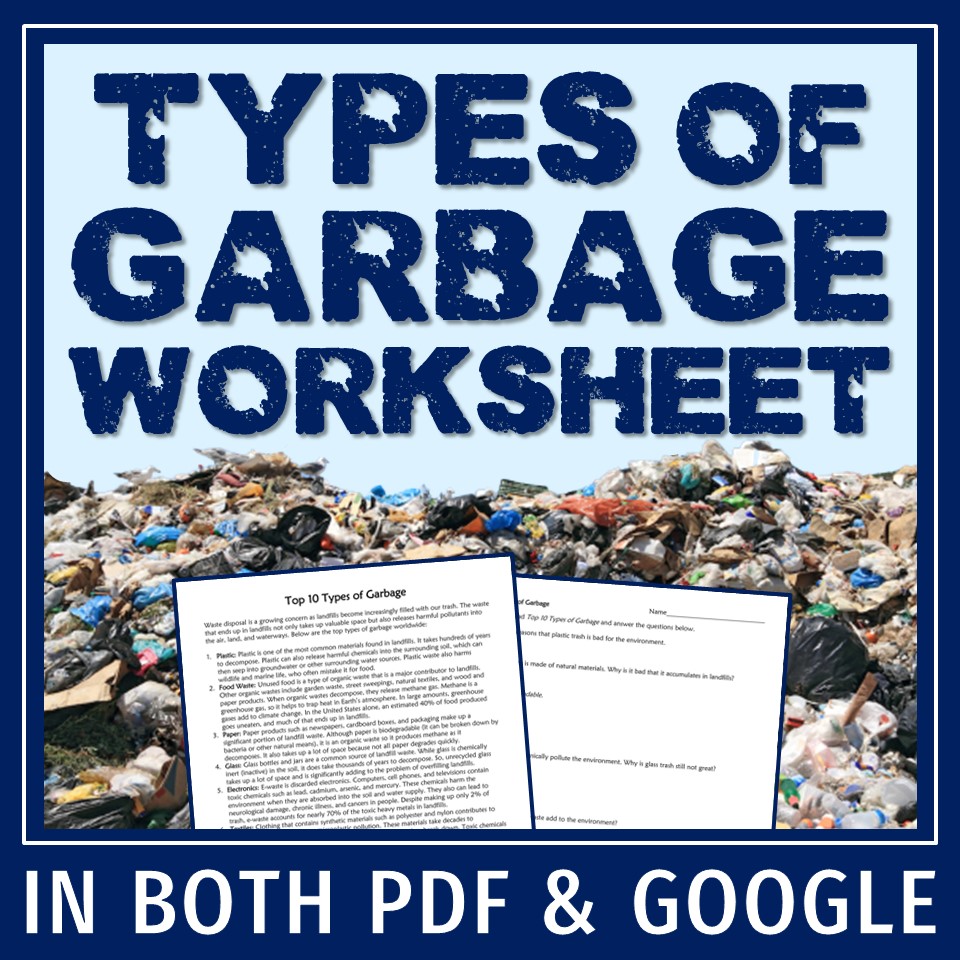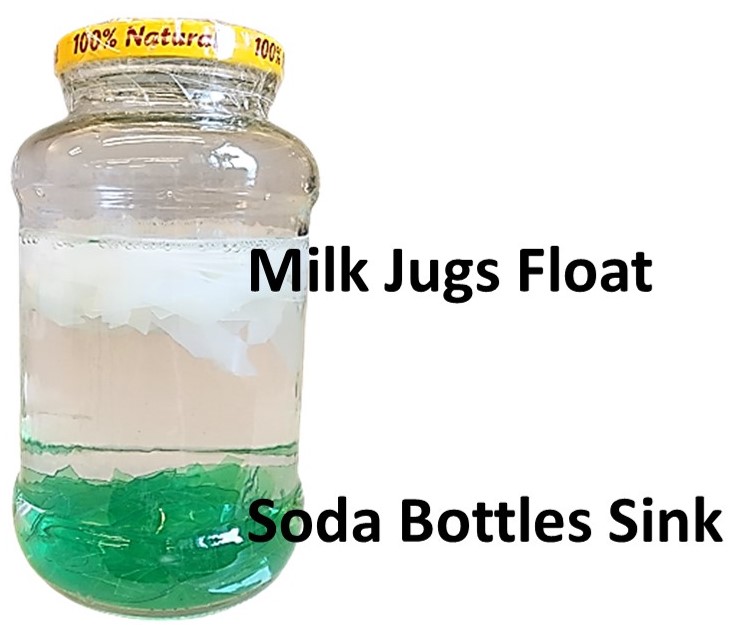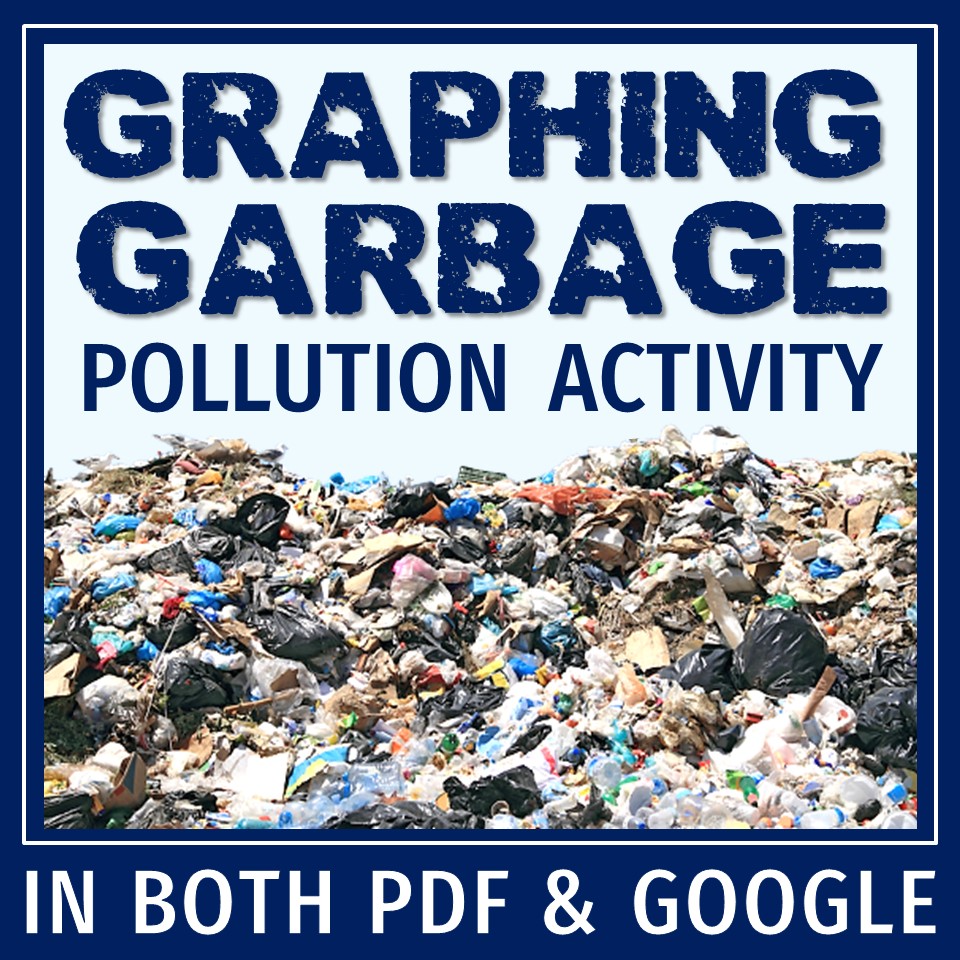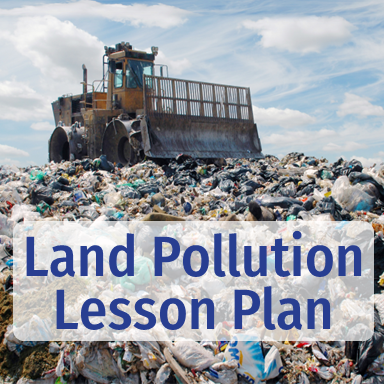
Land Pollution Lesson Plan
As I was developing my land pollution lesson plan, I couldn’t help but take a little trip down memory lane to the 1980s…
When I was a kid, I remember getting a lot of messages about not being a “litterbug”. There were road signs, PSA ads on TV between cartoons, and I made an amazing little poster about trash in elementary school. So my generation got the message… littering is bad. (We really had to teach people not to throw trash out of their car window? Really? But I digress…)

While being a “litterbug” seems to have been cut down, garbage is still a huuuuuge issue on our little third rock from the sun. Even though it’s not as common to see someone throwing their Big Mac container out of the window, the amount of garbage humans generate is really out of control, and we are running out of ways to deal with it.
Did You Know?
- Up to 8 million metric tons of plastic reach the planet’s oceans each year. That equates to five grocery bags filled with plastic for every foot of shoreline on Earth.
- Globally, enough hazardous waste is generated each year to fill the New Orleans Superdome more than 1,500 times over.
- New York City residents throw out enough garbage each day to fill the entire Empire State Building.
- Roughly 8,000 disposable diapers are thrown away before a child is potty-trained.
- Americans throw out enough plastic cutlery (cups, forks, spoons, and knives) annually to wrap around the equator 300 times.
- Globally, a million plastic bottles are purchased per minute.
- Only 9% of the plastic ever created since the 1950s has been recycled.
- In the United States alone, over 151 million cell phones are thrown into landfills every year.
And get this… The average US citizen generates around 4.5 pounds of trash daily! This stat is a great “in” to get students’ attention about garbage and land pollution. Right off the bat, let students experience how much trash this really is. I got this idea from Karen from Science by Sinai. She fills up a plastic bag with exactly 4.5 pounds of trash and then lets her students feel how much waste that really is. Once they’ve felt it, you’ve definitely gotten their attention!
Land Pollution Lesson Focus Questions
I approach my land pollution lesson plan with three main questions:
- What exactly are we throwing away?
- Where does it all go?
- What does the data say?
- What are we each contributing?
What Are We Throwing Away?
I start out teaching land pollution and garbage by getting kids thinking about what exactly we mean by garbage. We need to answer the question: what exactly are we throwing away each day? To learn this, students read a simple 1-page article about the top 10 types of trash and then answer text-dependent questions. For instance, students will read that plastic, food waste, paper, glass, electronics, textiles, construction debris, medical waste, hazardous waste, and yard waste are the most common types of trash. This is a very simple, straightforward worksheet assignment, but it’s necessary so that kids know exactly what we mean when we say “trash”.

Plastic is the Problem
Because a large portion of our trash is plastic, it is important for students to understand that not all plastic is created equal. Different types have different properties and uses. For example:
- PET is in soda bottles, water bottles, and peanut butter jars.
- HDPE is in milk jugs, shampoo bottles, and grocery store bags.
- PVC is in plumping pipes, credit cards, and toys.
- LDPE is in plastic wrap, sandwich bags, bread bags, and garbage bags.
- PP (polypropylene) is in medicine bottles, hot food containers, and straws.
- PS (polystyrene) is in packing peanuts, Styrofoam cups, and egg cartons.
Students (and many adults) are often surprised to learn that plastic varies so widely. A nice, quick way to prove this is to cut up both a milk jug and a soda bottle into about 1-inch shards. When placed in water, the milk jug floats and the soda bottle sinks.

A great way to familiarize kids with the different types of plastic is Science by Sinai’s Plastic Scavenger Hunt. After a reading on plastic, kids look in their own homes for the different types of plastic. (If you don’t think this is an activity your students could do at home, you can always set it up in your classroom!) This is a truly impactful activity that always opens their eyes not only to the types of plastic in their everyday lives, but also just how much plastic is in their life.

Where Does It All Go?
Next, ask the question: where do all these types of garbage go? Kids need to know where our garbage goes… because they have NO CLUE. Sometimes kids will mention landfills or recycling, but that’s generally the extent of their prior knowledge. I have students read this quick, 1-page article that discusses landfills, waste-to-energy facilities, recycling, and composting to help them get a broader picture of what happens to their trash after it leaves their sight and mind.

What Does the Data Say?
The next question to answer is: what does the data say? You know I love to include data analysis where I can, and this topic provides a great opportunity to get kids playing with data and graphs. So, I created a data-based activity where students have to take data from simple data tables and use it to make line graphs, bar graphs, and pie charts. As they learn more about land pollution and garbage, they’re practicing their data analysis skills… win-win!!

The data and graphs include 5 sets of information:
- Waste generated by year (line graph)
- Types of waste (pie chart)
- Where waste goes (bar graph)
- Percent of waste recycled by year (line graph)
- Recycling rate by product type (bar graph)



After pulling the data and making graphs, students analyze the data. They’ll answer questions, summarize the data, make claims based on evidence, and more.
What are We Each Contributing?
The last question to focus on for a land pollution lesson is: what are we each contributing? What is in our lives that contributes to the problem?
Because packaging represents about 65% of household trash, a great way to approach this question is to have kids examine the packaging of products they use all the time. I found an incredible activity also developed by Karen at Science by Sinai. (Can you tell I’m a bit of a fan yet?!)

Her Excess Product Packaging Lab is another huge eye-opener for students. She has kids bring in a package of their choice from home – it could be food, a toy, an electronics – whatever. The kids separate the item from the packaging and measure the mass of each. From this, kids calculate the PERCENT TRASH. Students are always shocked to find that some items are up to 50% trash!
After the initial “OMG I can’t believe that!” lightbulb moments, the students answer discussion questions. The questions are great because they get kids thinking about what is necessary for packaging (for instance, to protect the product) and what is just for “looks” or advertisement. They will also analyze which components can be recycled and which will end up in a landfill.
Additional Resources
If you are teaching pollution, you may also be interested in my blog on how I approach water pollution.
And – as you know by now I am a fan – Karen Sinai also has a great blog post on water pollution as well as land pollution.
Let’s Connect!
If you like these ideas, please follow me on Instagram where I offer science teacher tricks and tips! And you can follow me on Teachers Pay Teachers, too!
Share it:
- Read more about: Environmental Issues



